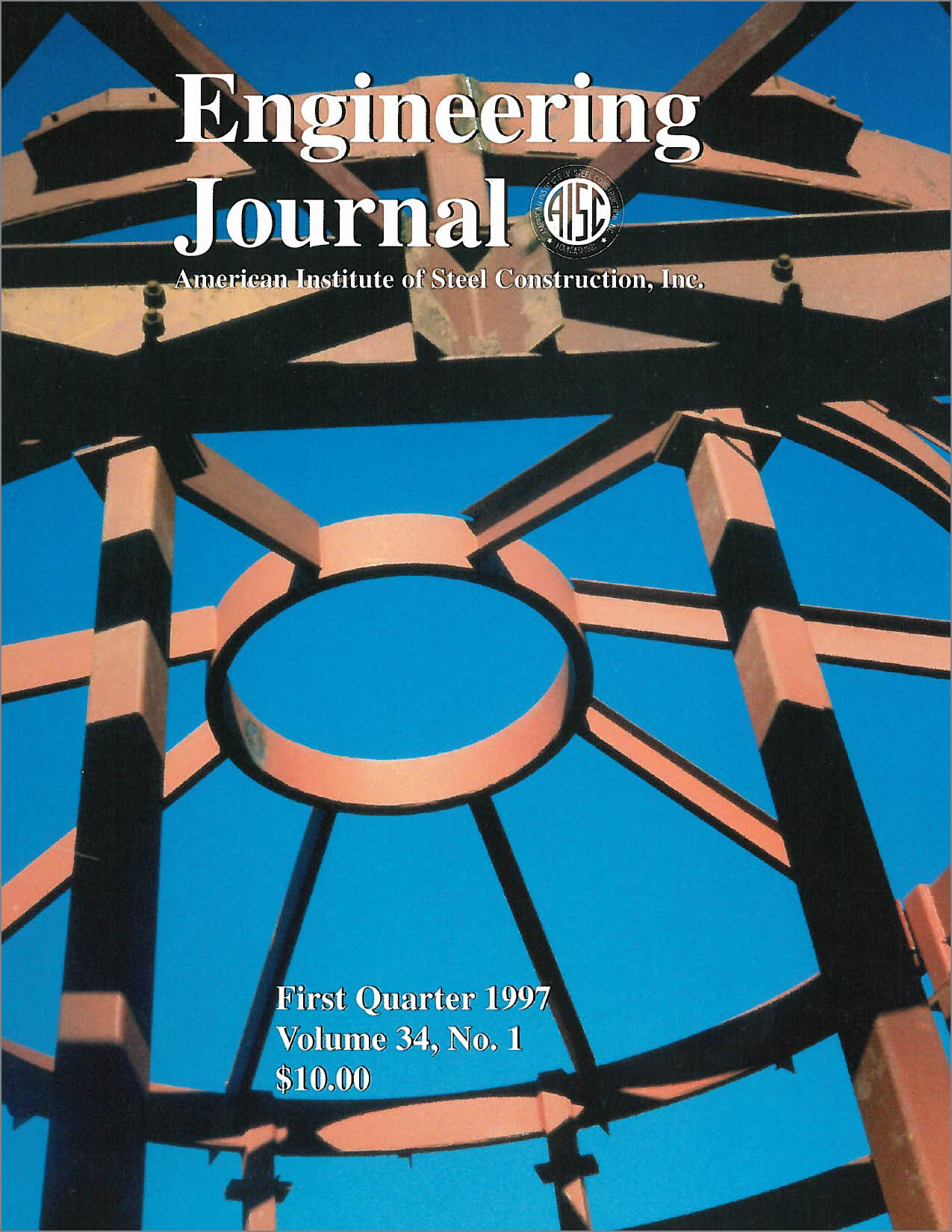Design of Tension Circular Flange Joints in Tubular Structures
DOI:
https://doi.org/10.62913/engj.v34i1.676Abstract
As the use of circular steel tubes in different structures has increased dramatically in recent years the connections between tubes have become very important. One of the most important and common methods of making connections, especially field connections, in tubular structures is with bolted circular flanges. The design of such a joint under an overall axial tension force requires the determination of flange dimensions and the number and arrangement of bolts. Based on previous theoretical research work and tests on circular flange joints in tubular structures, a new design method for these joints is proposed. Design charts, which are in accordance with the AISC LRFD design specification, have been produced and can be used to decide flange thickness and number of bolts for a joint very easily. These design charts are produced for one tube grade and one flange grade but can be modified for various grades of tube and flange plate materials, both A325 and A490 bolts, and various levels of tension load applied to the connection. It has been shown that the method is accurate, reliable and easy to use.

